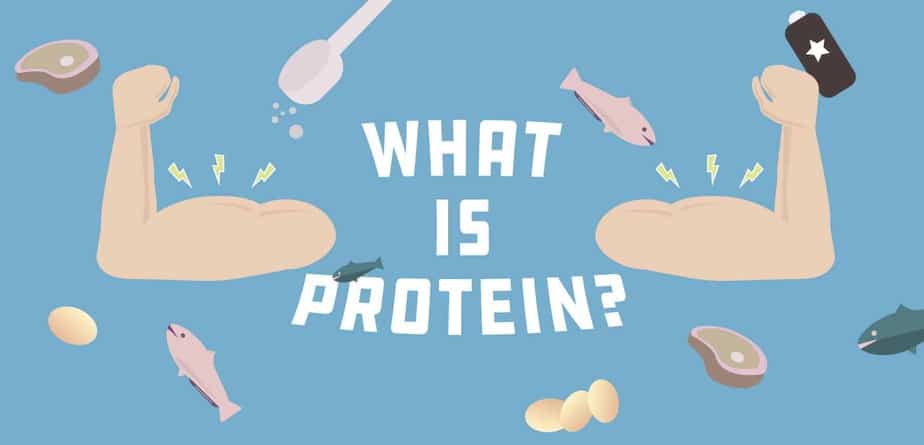Protein is an essential food group consisting of one or more long chain amino acids. Proteins play a vital in each organism’s bodily functioning–from building hair and muscle to building antibodies and key enzymes.
In order to get the most out of your protein, we need to first answer the question, “What is Protein?” By learning what protein is and how it functions in the human body, you can better optimize your diet for better protein intake based on your fitness goals.
Key Point: Optimized protein intake is a key part of basic human nutrition, but it is especially crucial for individuals looking to build an optimized fitness routine.
Introduction to Proteins
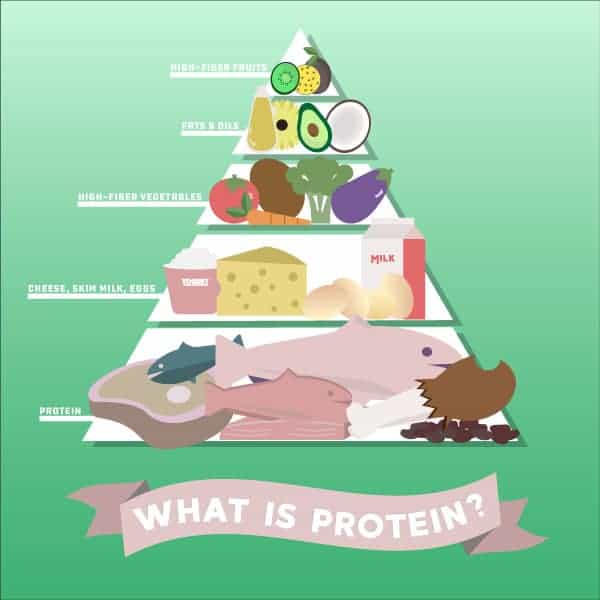
Proteins are structures, composed of amino acids, that can perform a variety of functions.
Proteins, like carbohydrates, fats, and water, are considered a macronutrient. They are nutrients that are needed in large amounts (macro) in the human diet to help build and fuel your body.
Proteins are one of the most versatile nutrients in the body that can provide structure, send signals, and provide energy to power our bodies’ complex systems.
What are the Functions of Proteins?
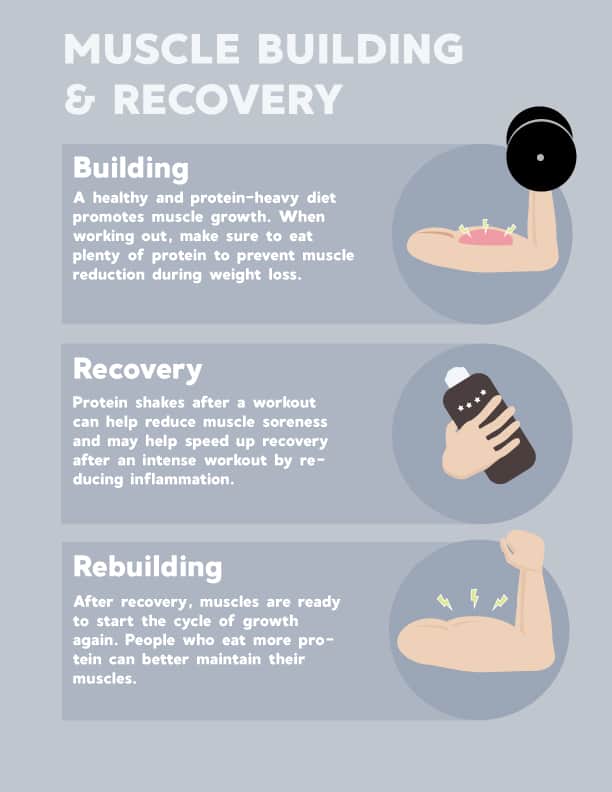
Proteins are the workers of the human body which keep you both strong and healthy. You can also think of this protein as the scaffolding of the body since it is a primary component of your skin, nails, bones, tendons, and ligaments.
Proteins are also responsible for the way you feel, your sense of hunger, even your motivation to do various tasks.
Besides building big, strong muscles and muscle mass, protein also helps to repair cuts, wounds, and tissue damage that happens from injury or just the regular wear and tear of living life as a human.
Understanding Protein Sources
While animals (chickens, pigs, and cows) as well as animal products (cheese, milk, and eggs) provide a high amounts of protein, plant sources such as legumes, nuts, seeds, and soy also contain protein.
There are some factors regarding both animal and plant proteins that everyone should understand and there’s pros and cons to both, which should be considered.

Complete vs. Incomplete Proteins
The term “complete protein” means the protein contains all nine essential amino acids. On the other hand, “incomplete proteins” are missing one or more of the essential amino acids.
Complete proteins are found in animal-based foods — chicken, turkey, beef, eggs, even ostrich! Incomplete proteins are found in non-animal foods — plants, seeds, nuts, and legumes.
Though you may not be able to get all nine essential amino acids from a single plant-based protein source, you can eat “complementary proteins” by mixing different plant protein sources (like rice and beans). What one plant protein source lacks, another makes up for.
Different Protein Sources
Animal Protein
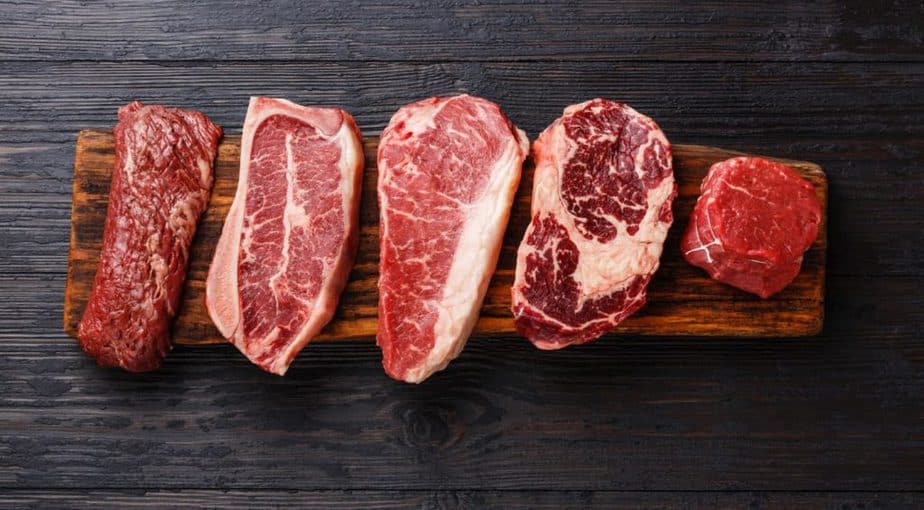
Animal protein includes red meats (beef, pork, lamb, veal, and goat), poultry (chicken, turkey, duck, geese, and game birds), and seafood (fish and shellfish).
Pros of Animal Protein:
- High protein source (meaning most of its calories are from protein)
- It provides “complete proteins”
- Excellent source of vitamins such as zinc and heme-iron
Cons of Animal Protein:
- Some animal protein such as red meat can contain a high amount of saturated fat
- Diets with high amounts of meat may contribute to diseases such as cardiovascular disease and Type 2 diabetes
Given the pros and cons of animal protein on your health, the USDA recommends limiting your intake of meat (including processed meat) to 26oz. per week or less.
Seafood Protein
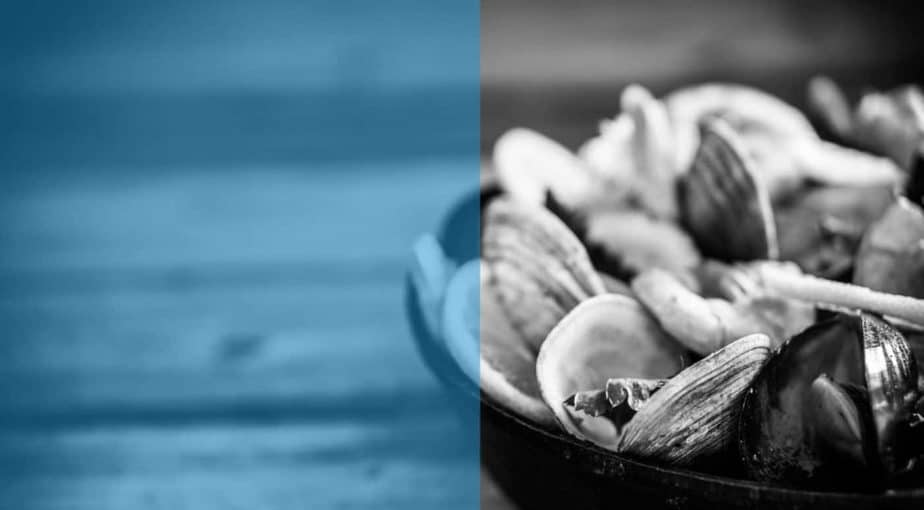
Like red meat and poultry, it too is a high protein source. However, instead of saturated fat, it also contains essential fatty acids EPA and DHA, which are beneficial for health.
Research supports that the intake of EPA and DHA can help reduce the risk of diabetes, obesity, cardiovascular disease, Alzheimer’s disease, and more. The one downside is that some larger fish, such as tuna, can contain high levels of methylmercury, which is harmful to the nervous system, especially in developing fetuses.
Since seafood has so many great health benefits, the USDA recommends including 8oz. per week. As a good rule of thumb, try to choose the lowest mercury-containing choices.
Pros of Seafood Protein:
- High protein source (meaning most of its calories are from protein)
- It provides “complete proteins”
- Essential fatty acids, such as EPA and DHA
Cons of Seafood Protein:
- Possible methylmercury
Plant Protein
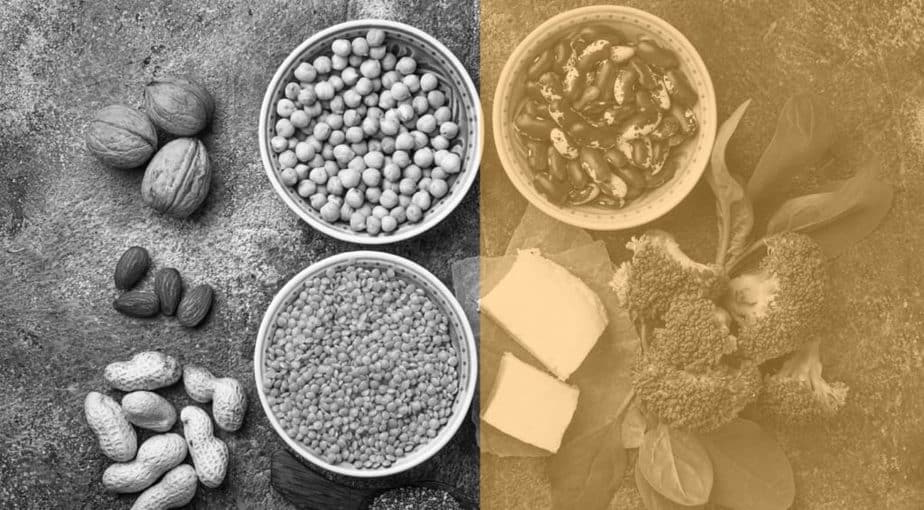
Some of the most common plant proteins are soy and hemp. For non-exclusive plant protein eaters, the USDA recommends consuming 5oz. per week of nuts, seeds, and legumes (or 14oz. per week for vegetarians).
Pros of Plant Protein:
- Low saturated fat
- Some plants are high in vitamins, antioxidants, and other nutrients
Cons of Plant Protein:
- Only a few plants such as soy are considered “complete protein” sources
Soy Protein
Soy, which is a legume, comes in many shapes, sizes, and forms. From edamame beans to soy milk and tofu, soy can really take on many textures and flavors, which is why it’s often a favorite among vegans and vegetarians.
Pros of Soy Protein:
- A good source of fiber, copper, manganese, and iron
- Low in saturated fats and high in polyunsaturated fats
Cons of Soy Protein:
- Incomplete protein source
Hemp Protein
The industrial hemp plant is used to create edible hemp products such as hemp hearts and hemp protein (and yes, our beloved CBD). However, edible hemp protein does not contain cannabinoids, which stimulate the cannabinoid receptors as CBD oil would. But hemp is a plant-based protein source which has a handful of benefits.
Pros of Hemp Protein:
- Contains polyunsaturated fats and essential fatty acids EPA and DHA
- High in fiber
Cons of Hemp Protein:
- Incomplete protein
Whey Protein
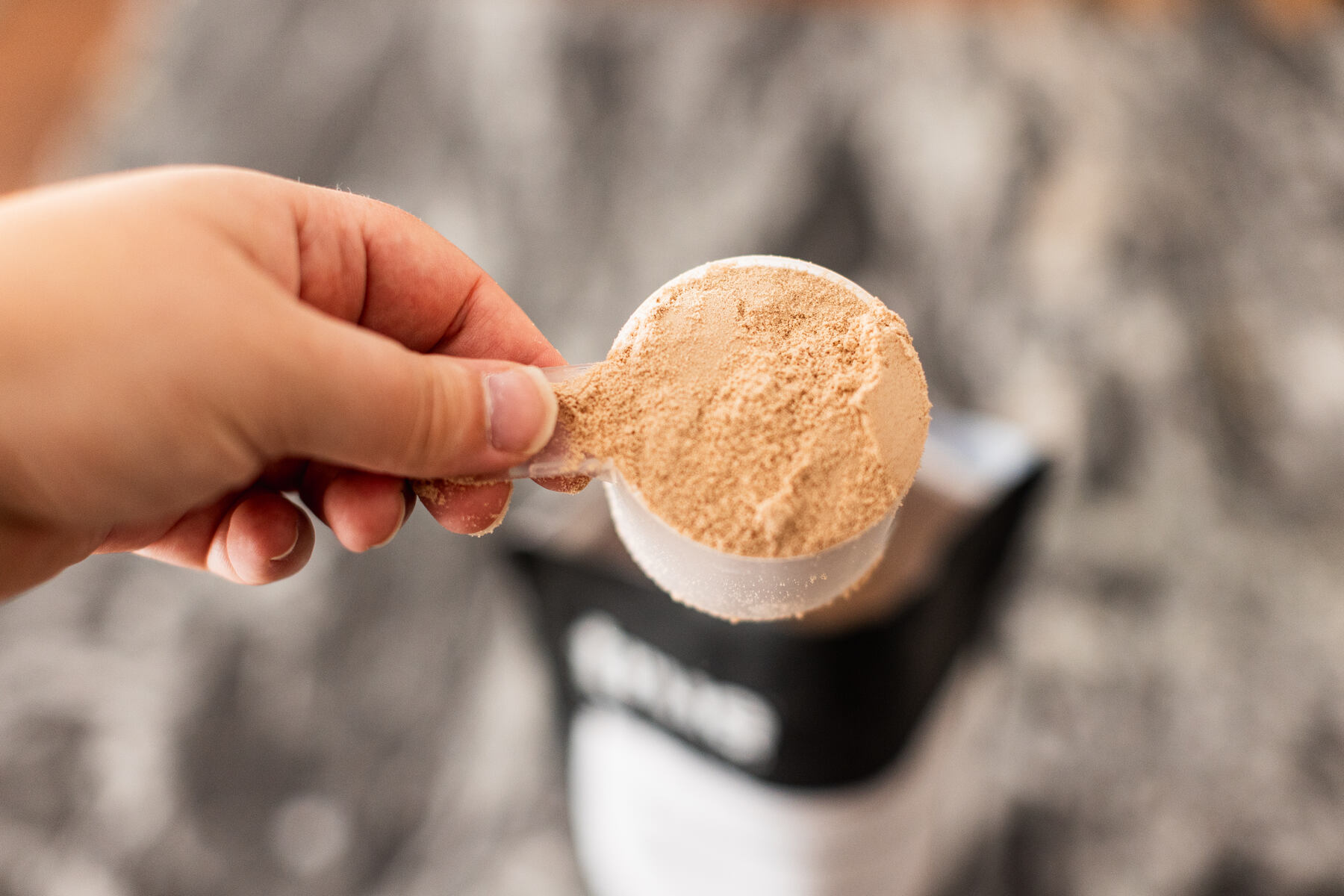
Whey protein is one of the two main proteins found in milk, the other being casein, which is found in cheese. It is a standard protein powder mix that people use when they work out or are looking for a meal replacement.
Pros of Whey Protein:
- A complete protein source
- Excellent source of cysteine, a precursor to the body’s master antioxidant glutathione
- Suitable for vegetarians (not vegans)
- May help speed recovery time after exercise
- Water-soluble and easily mixes into apple sauce, smoothies, and more
Cons of Whey Protein:
- Allergies possible
Top Sources of Protein Beyond Whole Foods
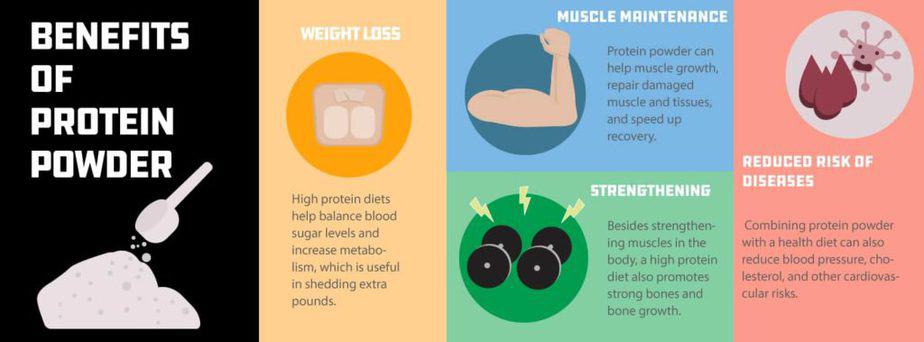
Protein powders can be a great way to get the benefits of protein in your diet without the saturated fat content of some meat products. The most common protein powders are whey, soy, peas, rice, hemp, and bone broth.
Protein shakes, which provided 50-80g per serving, can be included as a breakfast or meal replacement as well as a pre or post-workout supplement to help maintain muscle mass and feed those pumped-up muscles. They are an excellent choice for people who are looking to bulk up at the gym, or for vegans and vegetarians who may not be eating enough protein.
When purchasing a protein powder, look out for excess sugar, artificial colors, or unnatural ingredients as these are not health-promoting. Look for a powder that is suitable for your lifestyle choices (vegan, vegetarian, etc.).
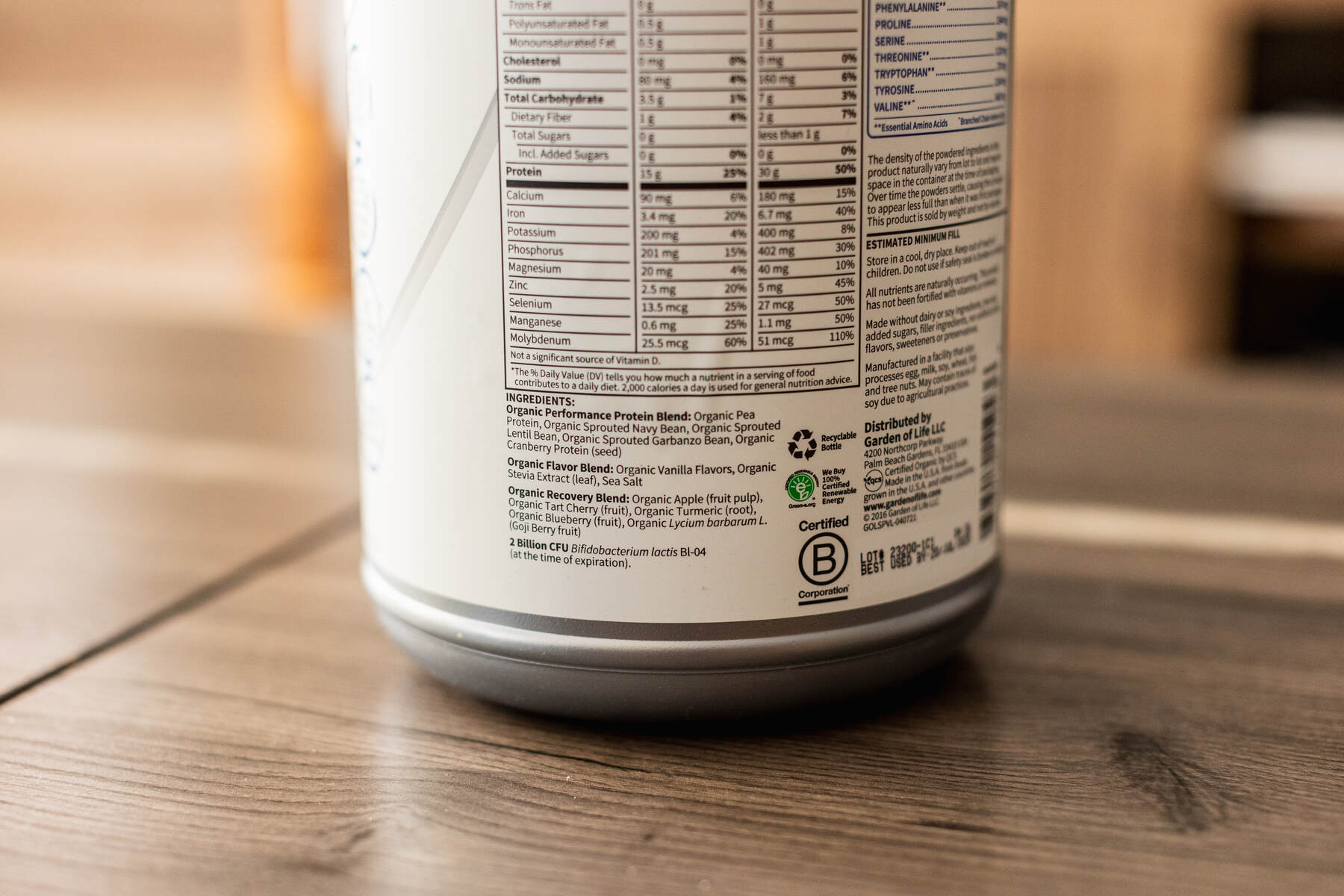
Bone broth is another protein powder that supplies complete proteins. If you are sensitive to MSG, buyer beware, bone broth is loaded with natural MSG.
How Much Protein Should You Eat?
For most individuals, a diet that supplies 10-35% of calories from protein is considered ideal if you are eating the right amount of calories and are maintaining a healthy weight.
What the RDA Says About Protein
The Recommended Daily Allowance (RDA) for protein is 0.8g per kg. In other words, for every kilogram of bodyweight you have, you need 0.8g of protein. If you are well above or below your ideal body weight, you may not want to use your current weight as a guide.
For those under the age of nine, since they are rapidly growing, they will require more protein than adults — around 1-1.5g per kg.
The RDA is not designed to outline the optimal amount of macro or micronutrients; it represents only how much of a vitamin, mineral, or macronutrient you need to avoid illness.
What the USDA Says About Protein
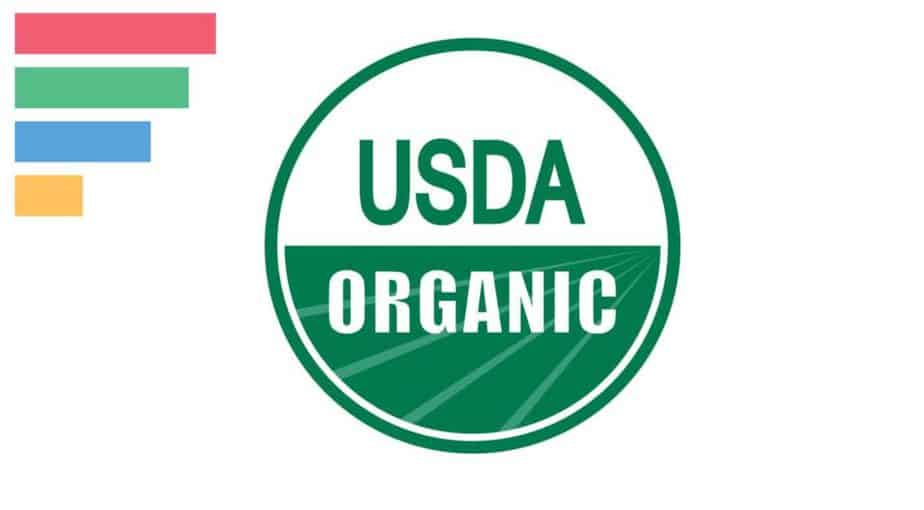
The USDA has a calculator that estimates daily protein needs based on age, sex, activity level, and other factors.
In general, the USDA recommends consuming between 5.5oz. of protein foods each day for people over the age of nine. It also recommends getting your protein from a variety of sources, including several servings of nuts, beans, legumes, eggs, and seafood throughout the week (not just burgers, ribs, and steaks).
High Protein Diets: All There is to Know
Blood Sugar and Insulin

One of the most important aspects of weight loss is maintaining a balanced blood sugar level. Protein (for the most part) does not cause a spike in insulin, like what would be caused by eating refined grains, sugars, and simple carbohydrates.
Protein also stimulates glucagon, which allows the body to burn sugar.
Therefore, by eating a diet that is higher in protein and lower in easy-to-digest carbohydrates (yes, donuts are on that list), it can potentially help you burn stored fat and lose weight. This is just one of the many benefits of protein–weight loss.
The Keto Diet
The Keto Diet is not a high protein diet; this is a high-fat diet. Eating a diet very high in fat (70% of calories), moderate in protein (20%), and extremely low in carbohydrates (10%) can be helpful for those who are insulin resistant. Because sugar intake is so low, the body switches to fat-burning for energy instead. This is known as ketosis.
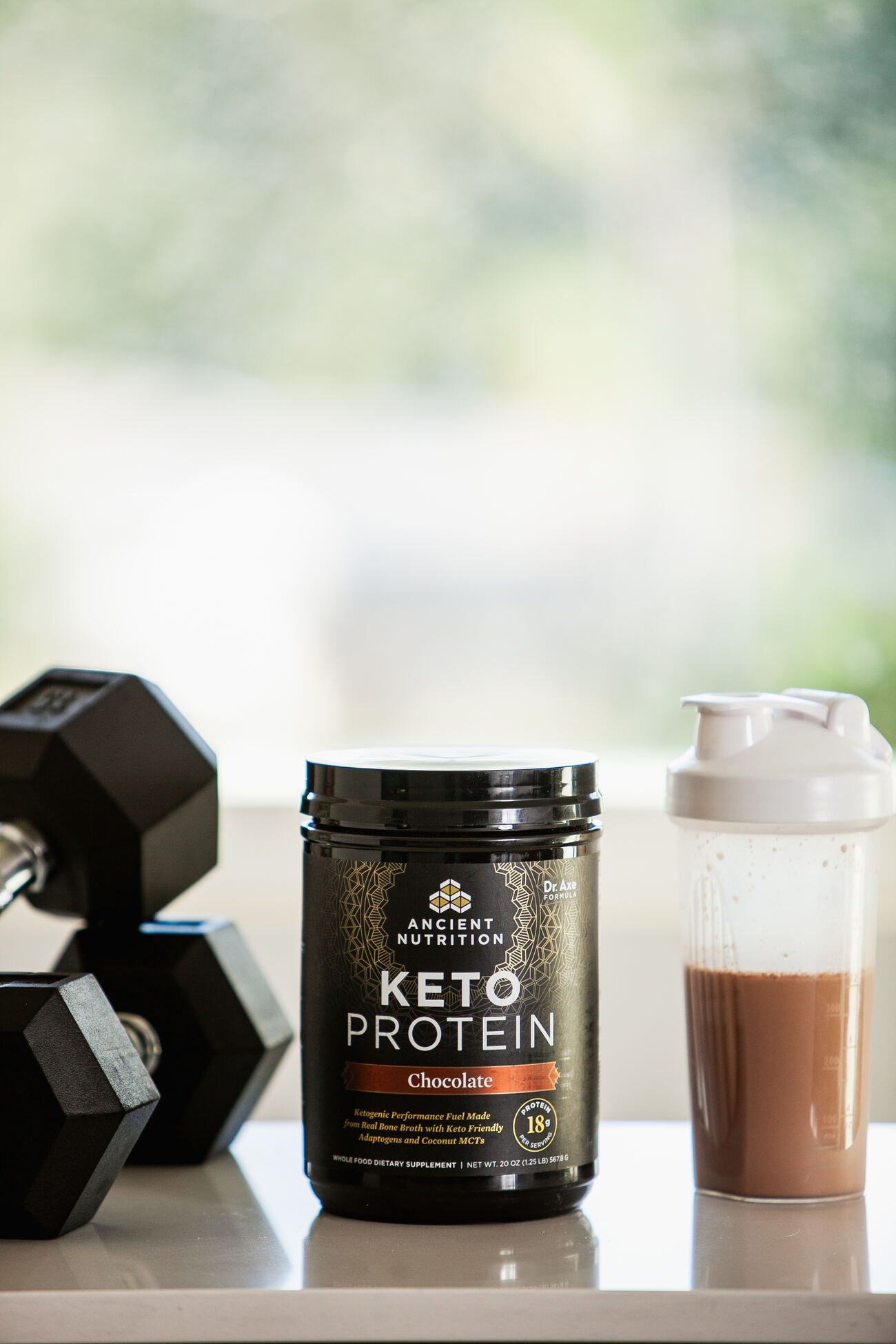
The Keto Diet was originally developed for people with epilepsy. Today, it has been shown to be effective for people with high blood lipids (fats), Type 2 diabetes, obesity, and cardiovascular disease. There is potential for side effects like flu-like symptoms, bad breath, and a change in bowel habits.
Hunger and Satiety
Eating a high protein meal (18-30% of calories from protein) helps a person to feel more satiated. A person is less likely to feel unsatisfied after eating and want to eat more, reach for snacks, or graze following the meal if they’ve consumed a plate of high-quality, complete protein.
Metabolic Rate

Studies show that eating a high protein diet increases metabolic rate overall — even when you are sleeping!
One thing is for sure: the more muscle you have, the higher your metabolism is. If you are beginning a weight training program to assist in weight loss, having enough protein on board can help build and maintain your muscle gains, which further supports your endeavor to become a fat-burning machine!
Side Effects of High Protein Diets
Your body is designed to process only so much protein, and overconsumption of protein for an extended period can potentially cause adverse effects:

- Kidney damage, because our kidneys process protein breakdown products. Research has found is that protein intake less than 2.8g/kg does not result in kidney damage.
- Calcium loss and diminished bone mass. Protein breakdown products are acidic and our bodies are susceptible to acid-base balance. However, some studies refute this theory.
- Liver damage,according to recent research.
Protein Deficiency
Common signs and symptoms of protein deficiency include:
- Cognitive developmental issues
- Hair loss, brittle hair, and weak nails
- Edema
- Organ failure
- Muscle wasting
- Weakened immune system
A disease called Kwashiorkor is caused by an extremely low protein diet in which individuals are eating high carbohydrate food.
Research on Protein and Human Health
Below are listed more serious health concerns that can develop from having an insufficient amount of proteins circulating throughout your system.

Heart Disease
- The USDA recommends limiting red meat and saturated fats to reduce the risk of cardiovascular disease.
- On the other hand, research from Japan has shown that eating soy protein significantly lowers the risk of heart disease.
Type 2 Diabetes
- High protein diets, where protein foods replace sugar-laden foods, can be an effective strategy for helping with insulin resistance in diabetes. This is because sugar and refined carbohydrates are the main perpetrators when it comes to insulin release.
- However, the USDA states that there is only moderate evidence to support that specific protein choices (lean vs. full fat) affect outcomes in Type 2 diabetes.
Cancer
- Intake of processed meats and high-fat meats seem to be associated with an increased risk of cancer, according to the USDA.
- Studies also show that eating highly processed meats are linked to an increased risk of breast cancer.
- Choosing plant-based proteins like soy may seem like an obvious choice to replace red meat and processed meat to help reduce the risk of breast cancer, according to some research studies.
Bone Health
- Certain levels of protein intake could cause the loss of bone mass through the acid-base balance of the blood, but research doesn’t seem to support this hypothesis.
- Low protein diets have been shown to inhibit the production of IGF-1, while high protein diets increase IGF-1 and the creation of new bone growth.
- Studies have shown that increasing protein intake after certain kinds of fractures improves healing outcomes and reduces the length of time the individual has to rehabilitate in a hospital setting.
- Research indicates that you should not forget to take in adequate amounts of calcium when eating a high protein diet if you are looking to strengthen your bones and promote bone growth.
Weight Control
- Protein has been shown to increase a person’s metabolic rate, both while awake and during sleep. Increasing metabolic rate with a regular caloric intake means that you can shed those extra pounds.
Protein Allergies

Atopic dermatitis, a kind of skin rash, is one common way that protein allergies can surface. However, sometimes the allergy to the protein is hard to detect because of the mild signs and symptoms such as fatigue and gastrointestinal complaints.
Testing for protein and other food allergies can be done via a blood test ordered by your doctor for severe allergies that can cause anaphylaxis.
Protein allergies are also tested is by taking part in an elimination-style diet, where a specific food is eliminated from your normal eating habits and you take note of how you feel when the food is removed, compared to when you were eating the food as normal.
Below are listed some of the most common foods that can cause people to experience food allergies:
- Cow milk
- Eggs
- Tree nuts
- Peanuts
- Shellfish
Protein Tips

- Eat a Variety of High Protein Foods.
- Combine plant-based protein sources such as tofu, nuts, and seeds with lean meat like fish and chicken to ensure you are covering all your bases with every meal.
- Choose Low-Fat Meat.
- Avoid dairy when possible, and select a skim milk version.
- If you choose red meat such as beef, trim the fat from the meat when possible.
- Choose fish to get your essential omega 3-fatty acids.
- Worry less about saturated fat content wit poultry options.

- Eat Smaller Portions
- Consume your protein bar, protein shake, and other protein supplements but avoid added sugars, artificial coloring, or artificial flavorings.
- Eat smaller portions of high protein meals that tend to be more filling than high carbohydrate meals, so they help you avoid weight gain.
- Experiment with Plant-Based Proteins
- Consume beans that are fibrous and contain more protein than any other vegetable.
- Eat an ounce of almonds that gives you 6 grams of protein–that’s comparable to the amount of protein in an ounce of ribeye steak!
- Choose whole grain bread that gives you 3g of protein.
Protein Foods and the Planet

The research shows that foods such as wheat, corn, beans, fish, soy, nuts, and eggs have a low amount of greenhouse gas emissions per gram of protein produced.
When looking at these food products, all but fish, nuts, and eggs have a low cost to consumers. These are compared to other meats, which have a medium to high greenhouse gas emission per gram of protein and are relatively expensive to produce.
Protein Wrapped Up
Protein is a staple in our diet. It is needed for many aspects of human health, including the production of muscle, the creation of cells, and the repair of tissues as well as creating hormones, enzymes, and neurotransmitters.
Getting adequate dietary protein (as opposed to eating too much protein rich foods) in your diet is essential. The amount of protein each person needs depends on their sex, age, and physical activity levels.
Most importantly, the source of protein matters. Mixing both plant foods and animal sources or dairy foods seem to be the best-case scenario for most people. Remember, plant proteins are incomplete, so combining different sources of protein-rich foods is essential.
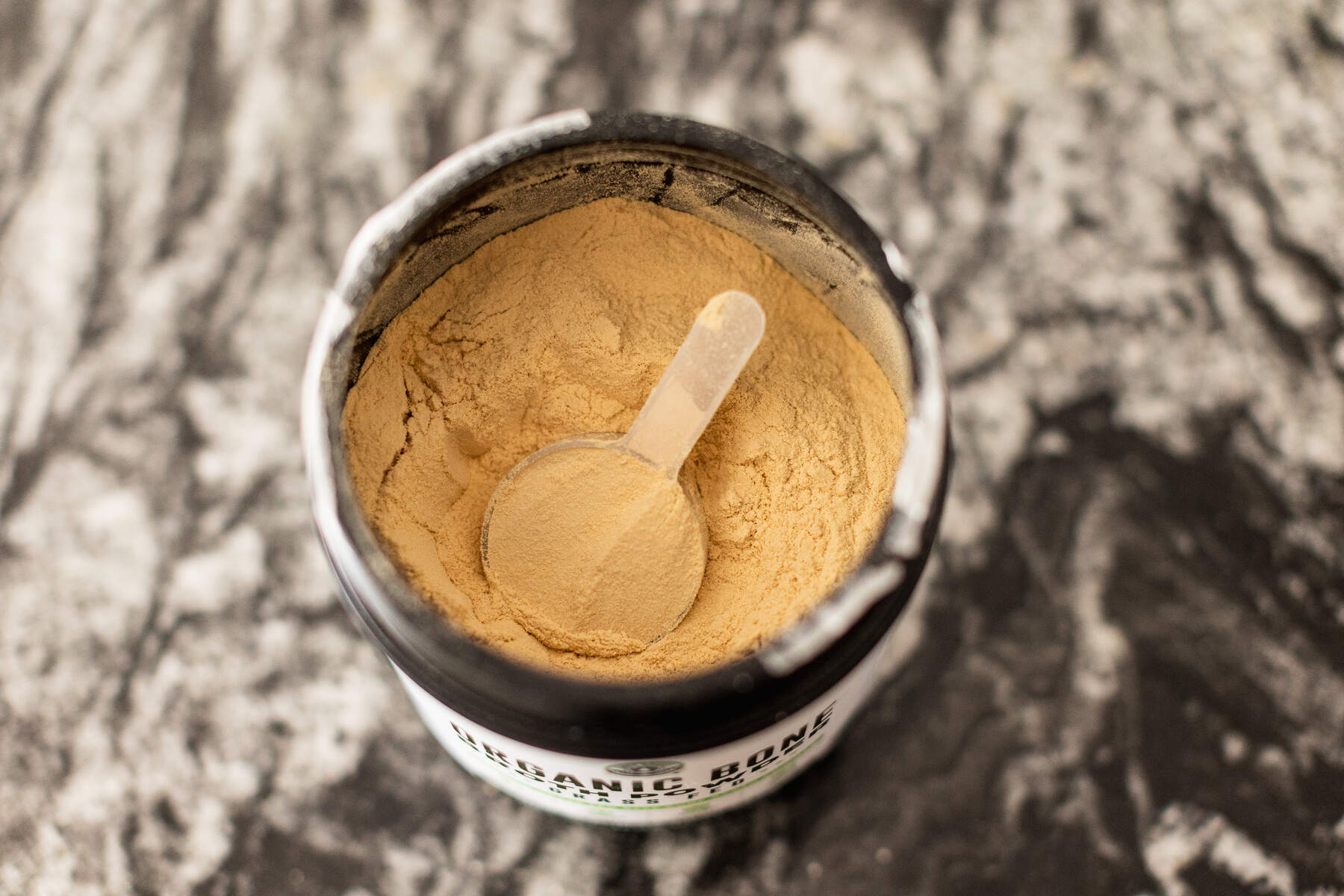
High protein diets seem to benefit several aspects of health, including weight loss. Protein helps you to stay full and can help increase your metabolic rate. On the other hand, not eating enough protein can negatively impact your health.
Choosing protein sources that have less of an impact on the earth, such as plant sources, also has the added benefit of helping protect the planet from excess emissions.
Conclusion: Protein is one of the key building blocks of nutritional health. Your age, fitness goals, and daily metabolic rate all play a role in how your body makes use of its protein intake.
